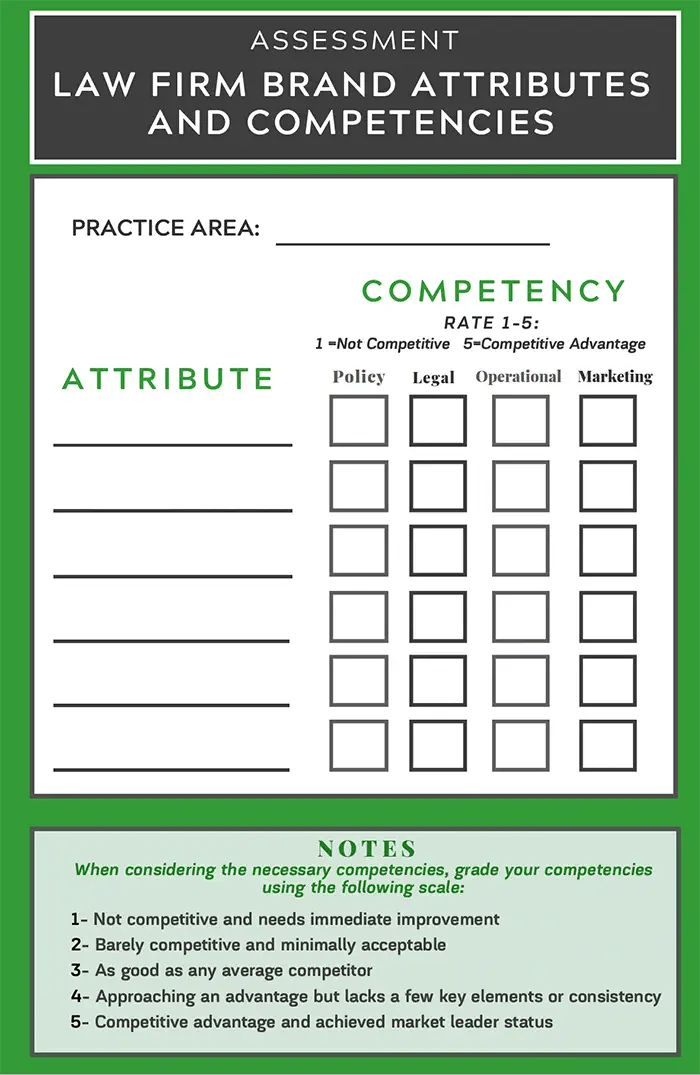The way clients purchase legal services continues to evolve
Good marketing requires an open mind and willingness to see the value of your services from the client’s perspective. It requires an appreciation of the buying process that clients employ before deciding to hire a lawyer or law firm. This buying process is much different than it was just five years ago, and it continues to evolve.
Acquiring new clients once relied primarily on reputation, work quality, personal and professional networks, and firm association. And while these aspects are still important, the manner in which clients are making their buying decisions has changed. As a result of unlimited free search capability, affordable technology, and applications that communicate in real-time, legal services purchasers are rapidly becoming a data driven group relying on comparative data.
Even if the ultimate purchasing decision is made after some form of personal contact, research is almost always conducted before a final decision is made. Doing a simple Google search on a particular law firm or attorney can reveal a plethora of information including prior case results. With all the data that are readily available to us today, it is borderline purchasing negligence not to perform basic online comparative research to support a buying decision.
A lack of quality information about you or your firm is often disqualifying. Modern clients increasingly consider more factors including online profile, demonstrable brand promises, cost-benefit trade-off, and objective evaluations of performance, and public reviews. Legal services purchasers quickly lose patience (and interest) if the information needed to support a buying decision is unavailable.
Smart firms supply continuous objective data to ensure that potential clients properly evaluate their capabilities and performance. Examples of these data include:
- Reporting recent legal successes,
- Analyzing changes in the law,
- Publishing positive news about their firm,
- Offering education and training resources, and
- Posting recruiting news.
A firm’s web presence and available content is sometimes their only voice in the room when shortlists are created. With so much available data, buyers sometimes welcome an easy way to disqualify a potential choice.
What should law firms do to adapt to the changing purchasing process?
Senior partners may have done enough in their careers to sustain them to retirement, but mid-level lawyers and associates have to adapt quickly. We understand that it is sometimes hard to relate many of the early stage actions in the planning and systems development phases, but unless these activities are already properly occurring, the best choice is to trust the process and catch up.
Sooner or later, many traditional marketing activities lose their effectiveness
Traditional law firm marketing models almost always include in-person marketing related activities. Many lawyers equate marketing with showing up in a client’s home town and spreading around some food and beverage money. It is surprising how many of these “client development” trips have no plans beyond coffees, lunches, and dinners.
Entertainment type activities take constant time and energy and create no lasting competitive advantage. These client development mainstays are mostly about ensuring that you maintain your spot in the rotation. For many, this is the extent of their client development activities. Better approaches combine a substantive portion of the trip with relationship building activities.
Conferences represent an opportunity to meet many people who are in the same place at the same time. Selecting the best conferences and deciding how often to attend requires forethought and an honest evaluation of the value of the time (opportunity cost of allocating time to other brand-building activities) and money to attend.
For those who publish and speak, conferences offer a chance to receive high visibility for these efforts. Speaking in these forums also provides an opportunity to develop and publish content, further enhancing your position as an expert in a particular field. Organizational leadership can also magnify all of these efforts.
In today’s legal world, it is not unusual to find once successful originators struggling with an eroding client base and referral network. For these individuals, it is as if their competitors have discovered kryptonite. In reality, these once successful lawyers have failed to adapt to changes in their markets and time has run out. Far too often the response is to go back to the empty well, eventually quit trying, and complain that the legal market “ain’t what it used to be.''
Sooner or later, especially as lawyers age, entertainment based marketing approaches lose their effectiveness. Smart firms and lawyers realize this, and they concentrate more of their efforts on brand building activities. Brand building actions are designed to increase appeal to entire markets rather than particular individuals. The effects are more widespread and long lasting. For these reasons, we strongly recommend augmenting traditional approaches to business development with a strong brand-building effort.
A commitment to building a brand is necessary
You may ask what really is a brand and why is it important? More than a logo or a tagline, a brand is the way you provide services and the results you achieve. A brand is a culmination of earned success and trust that is then supported by an authentically identified symbol or logo. There is no logo or color scheme that will sustain a poorly delivered service or lack of market value.
Building a brand starts with a vision of how you would describe the best version of the legal services you bring to the market. For example, typical brand strengths in the insurance defense legal services market include: timely reporting and billing, good communication, no surprises, practical results, willingness to try cases, experience, reduced attorney turnover, accurate budgets, effective case staffing, and consistency.
Since many insurance defense clients have predetermined billing rates, it is very hard to meaningfully use cost as a brand strength. In the long run, a deep discount will not overcome deficiencies in other qualitative areas. In the insurance defense market, much is about delivering a more responsive and compliant service for the same price as the competition.
Brand attributes for one market are not universally applicable to other legal service markets. Many high-end clients value bespoke solutions and a unique approach to handling their matters. The typical brand strengths of uniformity and rigid consistency valued by clients in the insurance defense legal service market may actually work against a firm when trying to attract another type of client. This is one reason law firm branding is so difficult.
Multiline firms who effectively brand a particular practice area will benefit in those markets but potentially suffer in others. In this sense, success is a failure. For this reason, a firm should only invest in institutionally branding those areas that rise to the level of a macro-firm core competency (most of the organization is competent at this work). Personal branding at the lawyer level is much more effective for reaching clients who hire lawyers and not firms.
- Which practice areas do you want to institutionally brand?
- Which practice areas do you want to individually brand?
Based on these predefined brand ambitions, the firm can create firm-level and individual marketing activities and support system improvements to effectively communicate and deliver these values in the market.
What are the attributes and competencies of a solid brand in your practice areas (PA)?
The template that follows is a handy tool to help define brand attributes and competencies:

The best approach is to communicate brand attributes in terms of their value to clients. For example, a client might describe timely case reporting as “no surprises”. Competencies refer to how you deliver the benefit. For example, timely case reporting is an operational competency.
Once you complete the assessment, carefully consider if you accurately identified the important brand attributes and your understanding of your value from the market’s perspective. We believe it is a good exercise to discuss these attributes with willing clients and non-clients. Market research is also effective to get a better understanding of who is getting ahead and why.
Once you have accurately identified the most important brand attributes and assessed competencies, you can begin building a competitive brand. Unless a key attribute is a liability to your marketing efforts, business development activities should occur simultaneously with the necessary competency improvements.
The cliche that says perfection is the enemy of progress comes to mind. Avoid the trap of believing perfection is necessary to effectively develop business. Remember, none of the competitors are perfect.
.webp?width=124&height=108&name=PerformLaw_Logo_Experts3%20(1).webp)
